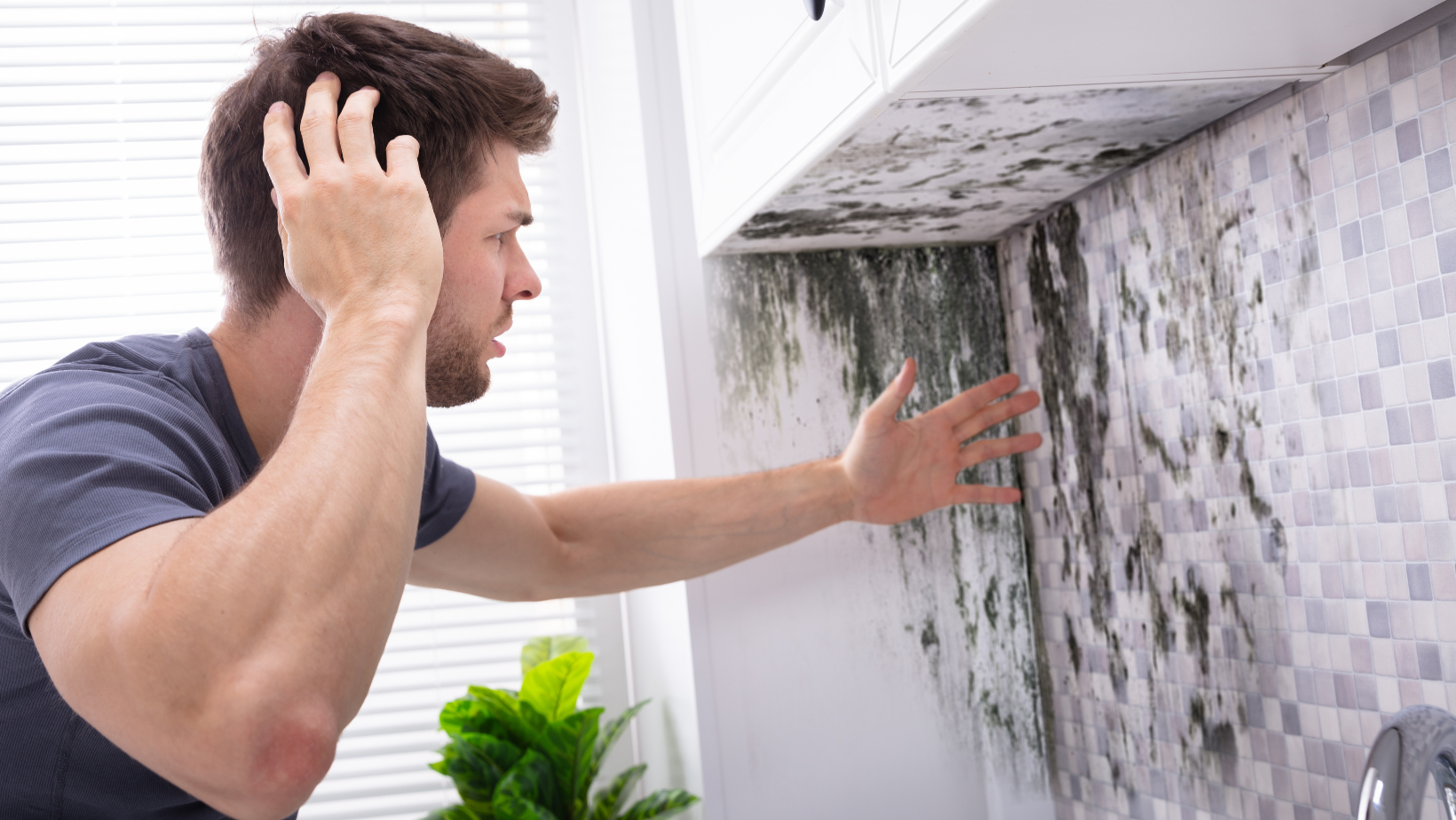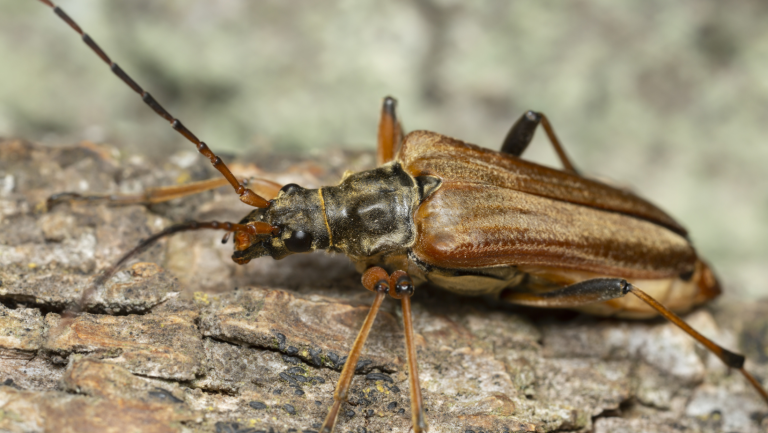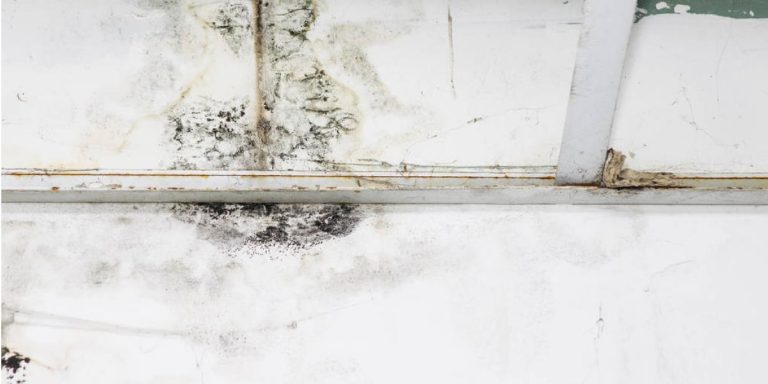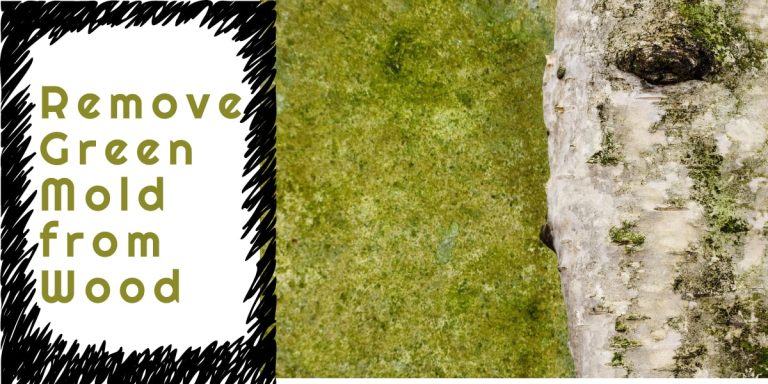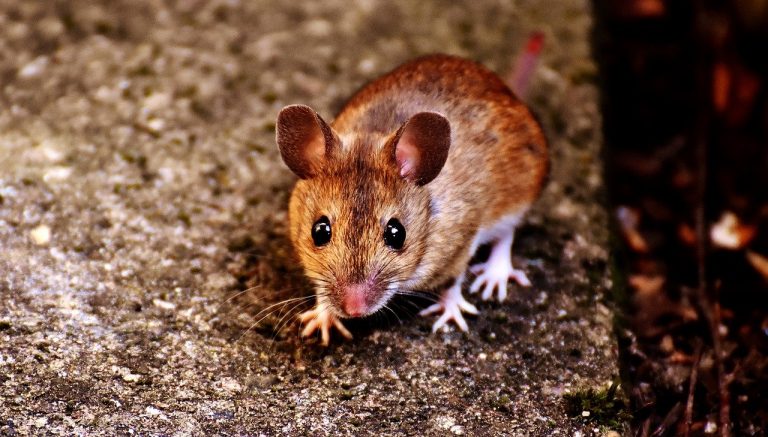What Is Mold?
Molds are a form of fungus. There are many different types, and they can occur both indoors and outdoors. Molds produce spores, which spread by floating around in the air. Mold spores are present in all indoor environments. There is no way to prevent spores, and they can persist in conditions where mold itself cannot grow.
Mold spores thrive in environments that are moist and warm, so when they land on a damp spot, they begin to grow. Molds can grow on a variety of different surfaces, including fabric, paper, wood, glass, and plastic. As they grow, they may digest the material they are growing on.
How many types of mold are there?
Nobody knows how many kinds of mold there are, but experts estimate that there may be 300,000 or more different types. Some are more likely than others to appear in the home. Below are common types of molds –
- Alternaria: This occurs in damp places indoors, such as showers or under leaky sinks.
- Aspergillus: This often grows indoors, on dust, powdery food items, and building materials, such as drywall.
- Cladosporium: This can grow in either cool or warm areas. It tends to appear on fabrics and wood surfaces.
- Penicillium: This tends to grow on materials with water damage. It often has a blue or green appearance.
Molds take a variety of forms and textures. They can be white, black, yellow, blue, or green and often look like a discoloration or stain on a surface.
What does mold look like on wood?
Black mold typically presents as a black stain covering a high-moisture area, most often one that has been flooded or damaged by water. It is most commonly found in bathrooms with frequently used tubs and showers, as this is an area that is most likely to suffer from flooding, water damage, or inadequate ventilation systems.
However, it can also affect any area with damp conditions, poor ventilation, and high temperatures; damp basements, kitchens, and laundry rooms can all serve as a breeding ground for black mold. Even stagnant leaks and floods can contribute to mold growth.
What does mold on concrete look like?
Mold might look like black spots or areas that have turned green. Some mold is white but can be confused with efflorescence, which is a salty film on the concrete. If the white substance dissolves easily with water it is likely the latter.
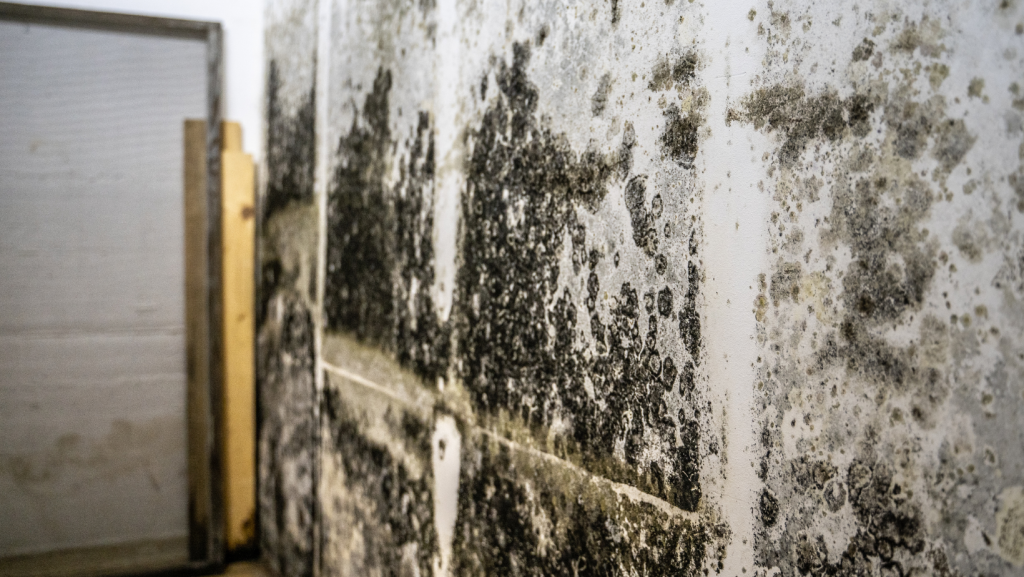
What does mold on drywall look like?
Your walls’ appearance can change significantly if there’s mold growth behind them. In addition to discoloration and stains, your walls may deteriorate. Paint or wallpaper can crack, peel, or bubble because of moisture and mold growth.
Furthermore, your walls may become warped or even bow or bulge when there’s a water issue, which often leads to mold growth.
What are the first signs of mold?
Mold starts out as a little spot but expands quickly. You’ll usually notice it early on unless it’s in an out-of-the-way location. Mold can be black, white, spotted, or just about any color, and may appear powdery, cottony, or velvety.
If you notice a spot and aren’t sure if it’s just an old stain or a splotch of dirt, here’s how to tell if it could be a sign of mold –
- Mold odor: Not all molds produce a smell, but many do. If you smell a persistent musty odor, then there might be mold in your home.
- Signs of water damage: Any long-term moisture will inevitably lead to mold. If your home has water stains, discoloration on walls, floor, or ceilings, or if you notice bubbling, cracking, or peeling paint or wallpaper, then you’re likely dealing with mold-producing problems.
- Visible signs of mold growth: Some molds might appear white and thread-like. Others appear in clusters of small back spots. Mold might be gray-brown, black, gray-green, or white. The mold that grows behind vinyl and wallpaper might be orange, pink, or purple.
- Water leaks: Mold growth from leaks isn’t always noticeable, especially if the leak is behind a wall or other hidden surface. If you know of a leak, then it’s important to get it repaired quickly. Areas where condensation often forms can also be a haven for molds, such as windows and metal pipes.
- Past flooding: If your home has experienced any flooding in the past, then it’s very likely that you have some form of mold growth as a result.
What are the mold’s first signs? Any allergies or other health-related issues?
When you have mold in your home, they usually show allergy-related symptoms. If you’re not sure whether your allergy-like symptoms are caused by mold in your home, then, consider this question – do your symptoms get better once you go outdoors or leave your home?
If so, then there is a good chance that mold is the culprit.
The symptoms of mold allergies are seen below –
- Coughing
- Sneezing
- Sore, itchy throat
- Congestion and running nose
- Wheezing and difficulty breathing
- Itchy, watery eyes
- Irritated and itchy skin
Some forms of household mold are toxic, causing serious, life-threatening illnesses. These highly-dangerous molds might cause symptoms such as bleeding, internal organ damage, mental impairment, cancer, and even death.
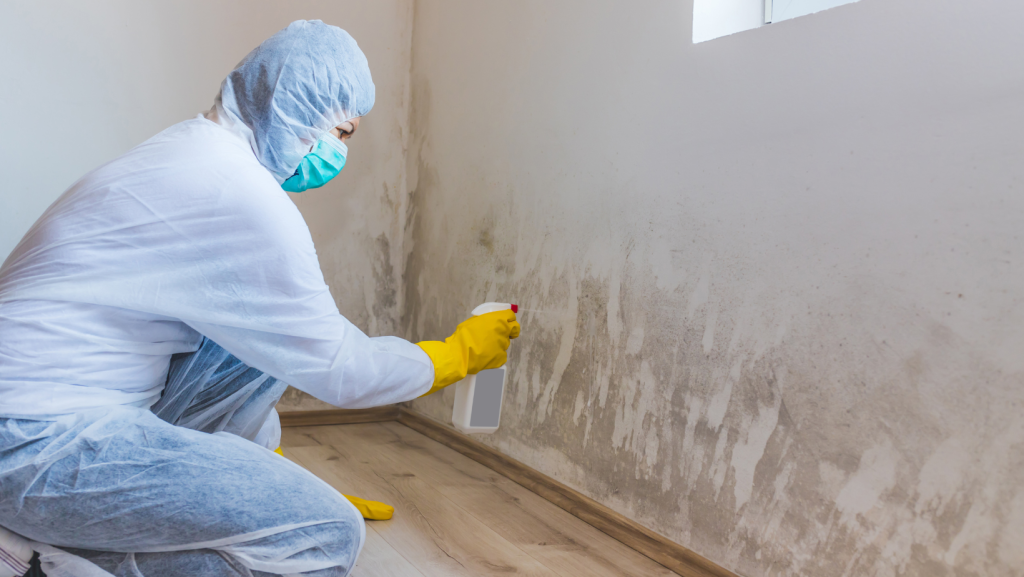
How long does it take for mold to grow?
Mold growths, or colonies, can start to grow on a damp surface within 24 to 48 hours. They reproduce by spores – tiny, lightweight “seeds”- that travel through the air. Molds digest organic material, eventually destroying the material they grow on, and then spread to destroy adjacent organic material.
According to the Environmental Protection Agency (EPA), mold typically takes 24 to 48 hours to grow after a flood if the right conditions are met. However, it depends on the type of surfaces and materials, amount of moisture, and temperature. Indoors, mold generally grows faster on softer surfaces in darker, warmer (70 degrees or more), and more humid environments.
The chance for mold spores to spread from one area to another also increases with time. These microorganisms can quickly fill the air and spread throughout your home, affecting more and more areas and endangering your health with every passing hour. Mold spores that start to colonize on surfaces within 24 hours become visible about 18 to 21 days after the flooding. But that happens if nothing has been done to dry the water and restore the affected surfaces.
What does mold smell like?
Mold does not always have a strong smell but when it is present, it’s often described as musty. Others have described mold as smelling earthy, meaty, or resembling the odor of wet socks or rotten wood. For many homeowners, the smell is unpleasant and pungent.
Despite the broad range of odors mold can give off, there are ways to distinguish those produced by mold from other types of smells. Mold smells are a bit like cheese in that they can vary a great deal but all share similar characteristics. Some smell sharp, like aged cheddar, while others, like mozzarella, have softer smells.
But despite this variation, we all know what cheese smells like. Mold smells are usually described as pungent, musty, and moist.
What does mold taste like?
The food may become soft and change color, while the mold itself can be fluffy, fuzzy, or have a dusty texture. It produces spores that give it its color, which is typically green, white, black, or grey. Moldy food also tastes quite distinctive, a bit like wet dirt.
Mold has an earthy taste, accompanied by a musty smell. While many people find them more or less unbearable, others are okay with them. Although the mold that commonly develops on food is generally regarded as unwanted and bad for health, there are special types that are used in food production to facilitate the process of fermentation.
Aside from fermentation, mold also modifies the taste of food. In fact, some exclusive delicacies, such as blue cheese, partly owe their characteristic taste to mold.
In what humidity does mold grow?
When relative humidity is above roughly 60%, there is a risk of mold growth– with the risk really increasing when the RH exceeds 80%. Elevated relative humidity can also lead directly to condensation. When humid air is in contact with a cold surface, it can create moisture or condensation.
Any area with high humidity is susceptible to black mold problems. Relative humidity greater than 55 percent is enough to support the growth of black mold. Indoors, humidity levels can fluctuate drastically due to the effects of HVAC systems.
Humidity can even vary greatly from room to room, so it is important to monitor it in various locations. A variety of factors can lead to an increase in humidity in a home and create the perfect environment for black mold to grow.

At what temperature does mold die?
Most molds will die when exposed to temperatures between 140 to 160 degrees Fahrenheit. It’s important to make sure that you’re not dealing with a heat-resistant mold if you intend on using this method to kill your mold. Getting rid of mold isn’t exactly an easy task, especially if you want to avoid using fungicides.
Mold grows in natural temperatures ranging from 0C to 50C (32 to 120 degrees Fahrenheit). The chances for mold growth skyrocket in these temperature ranges. Mold doesn’t die at lower temperatures; it just lies there dormant.
Approximately, how many species of molds exist?
There are many types of mold; some sources say that there are over 100,000 different species. Some mold species are considered harmless, while others can cause potentially serious health effects.
The most common mold types found in homes and commercial buildings are Cladosporium, Penicillium, Aspergillus, Alternaria, and Stachybotrys atra.
Is mold harmful to humans?
Exposure to mold can cause several health issues such as; throat irritation, nasal stuffiness, eye irritation, cough, and wheezing, as well as skin irritation in some cases. Exposure to mold may also cause heightened sensitivity depending on the time and nature of exposure. Molds are a type of fungi, which can flourish both indoors and outside. There are millions of mold species.
Mold is important for the planet’s ecosystem because it helps break down waste products and organic matter, such as leaves, dead trees, and garbage. Some people get sick from exposure to mold. Others have no symptoms and don’t experience ill effects of any kind.
Molds and many related microbial agents are ubiquitous in the biosphere, and mold spores are a common component of household and workplace dust. While the vast majority of molds are not hazardous to humans, a few are known to be, and reactions to molds can vary between individuals, from relatively minor allergic reactions through to severe multi-system inflammatory effects, and even neurological problems and death.
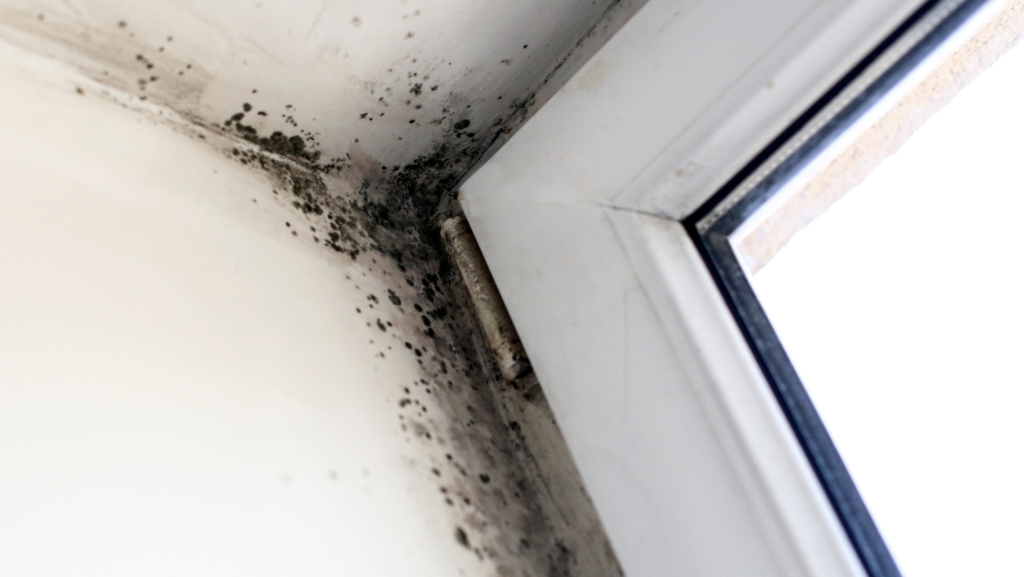
How to know if you are dealing with a dangerous mold?
One way is if you notice you suddenly have these symptoms. But those symptoms don’t necessarily come from mold and could be the result of something else. If you see mold and have the symptoms, then it’s more likely.
Try a household mold cleaner if you have a small amount and see if it clears up the problem. If not, you may need to call a local mold removal company to safeguard your health.
What does mold color tell you?
Probably not as much as you might think. While horror stories are told about “dangerous black mold”, not all black molds are dangerous. In fact, most cases of harmful black mold can be traced to specific species Stachybotrys chartarum. It isn’t technically toxic itself but produces harmful mycotoxins that some people have an allergic reaction to.
However, just because a mold is black doesn’t mean that it’s Stachybotrys chartarum. With over a hundred thousand different kinds of mold, it comes in all colors; even blue.
How are we exposed to mold?
Mold needs organic matter to feed upon and moisture in order to grow. When growing conditions are right, mold releases spores and volatile organic compounds (VOCs) into the air, which may make some people feel sick.
Mold spores may be breathed in or absorbed through the skin. Mold can also grow on food and maybe hazardous if ingested.

